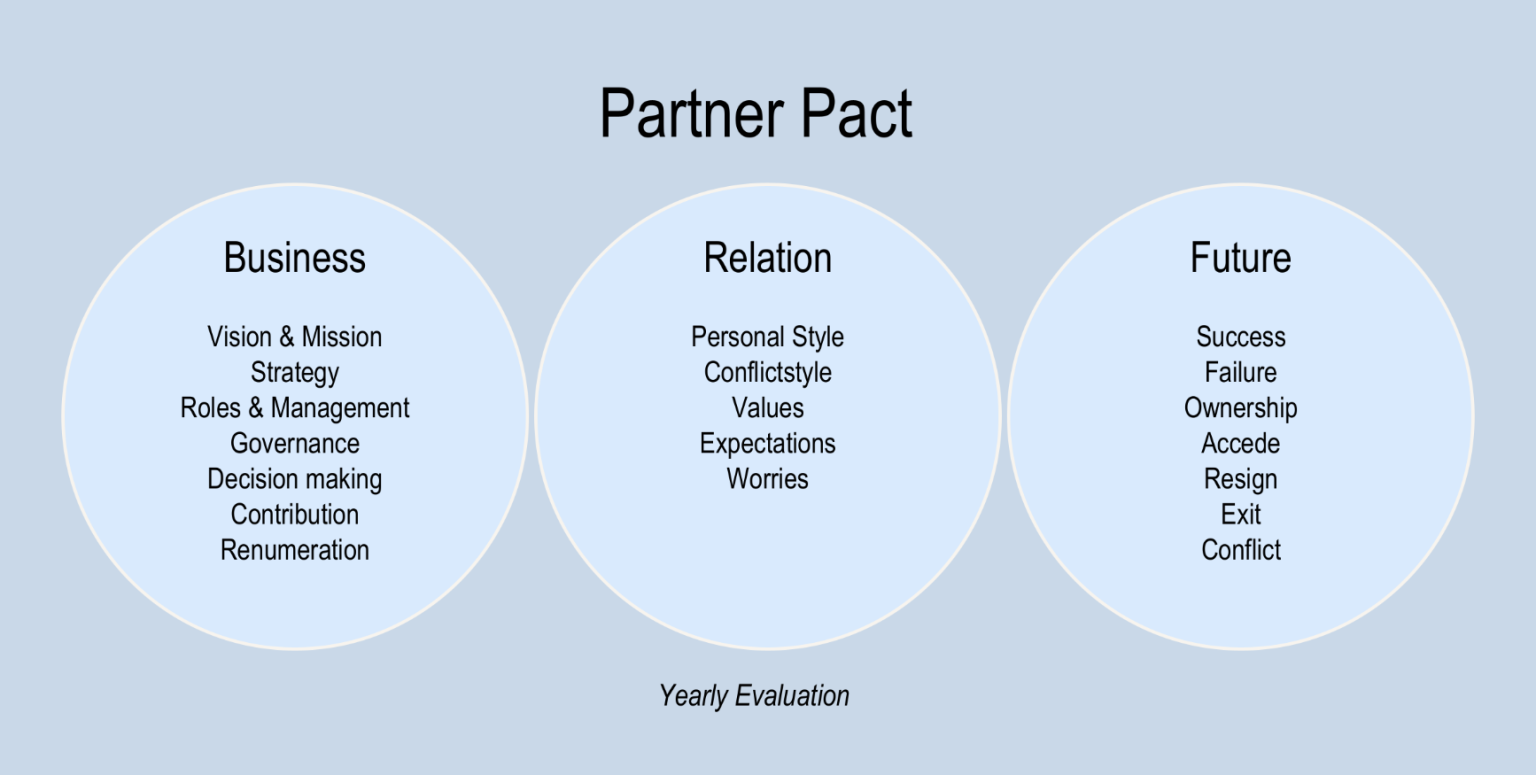Partner Pact
Collaborations between business partners or within teams are in many ways similar to love relationships. The more conscious partners are relating, the better the relationship will work out.
In the communication, patterns can arise and needs and expectations can change over time. Some issues may be sensitive and others can lead to recurring discussions.
A Partner Scan helps to map out the topics and issues that may need attention. By discussing this openly and making agreements, you create a guideline for the future. This can be through meaningful conversations or by entering into a so called Partner Pact.
The Partner Pact acts as a guideline supporting communication on essential topics. It is the foundation for a strong and effective relationship between founders, business partners, C-level teams, boards and investors.
Bewustwording van conflictpatronen is de start om anders met conflictsituaties om te gaan.
The growth and development of companies bring more partners, investors, employees, and strategic partnerships. Focus and speed are necessary to keep up with the business. But instead, minor irritations can start to escalate from annoyances to conflicts. Then, we see the honeymoon coming to an end. According to research, about 65% of the companies that fail, fail because of difficult mutual relationships.
Constructive mutual relationships are not only decisive for the success of the enterprise, it is also determinative for the culture in the organization.
Therefore, it is advisable for organizations to create a Partner Pact and keep it up to date. The Partner Pact is a framework that gives parties a much clearer picture of what they aim to achieve together. The process of creating a Partner Pact also improves communication and strengthens the mutual bond.
The Partner Pact consists of 3 parts: business, relational, and future. Partner Mediation facilitates the creation of the Partner Pact with the team members in 1 or 2 days.
Some reasons to create a Partner Pact:
- To crate clarity on issues between business partners;
- To take time to address sensitive and difficult subjects;
- To promote transparency and honesty;
- To remove the ambiguity that exists in many relationships;
- To take the time to focus on what really needs to be achieved;
- To gain insight into personalities, conflict styles and values;
- To assist in deciding whether to truly become or remain partners based on mutual trust;
- To create a document that is a guide for the future;
- To create or adjust agreements (whether or not by lawyers);
- To reduce the chance of misunderstandings and conflicts.



